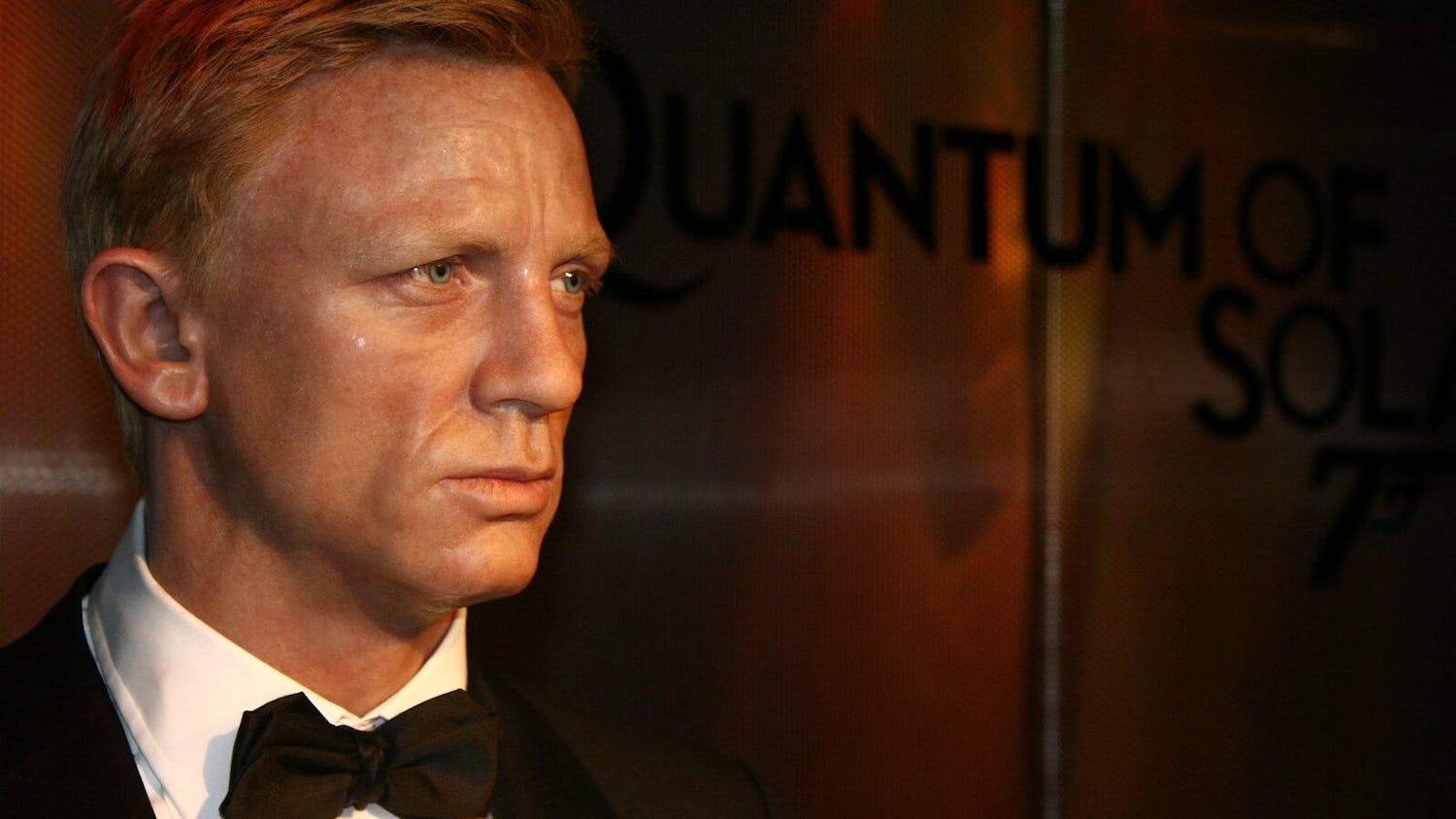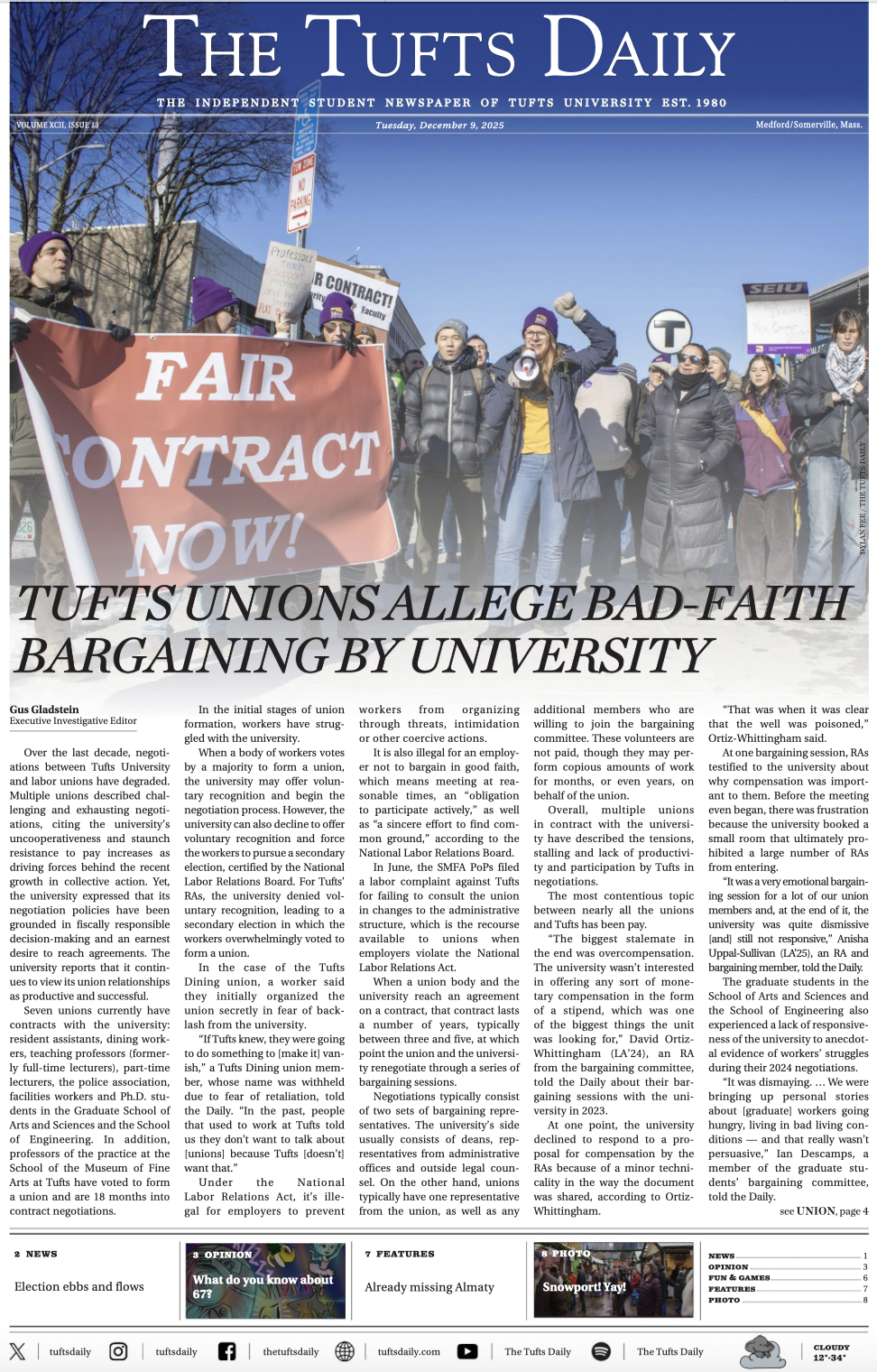These days, modern art is not new art. Rather, the term applies to Impressionism and the boom of artistic movements in the post-Impressionistic era. Yet what art historians and students now study as modern art, attributed to masterful painters commonly known as geniuses, was once contemporary - questionable and controversial before achieving classic status. This oft-forgotten distinction is vital to appreciating the "Degas to Picasso: Modern Masters" exhibit on display at the Museum of Fine Arts in Boston.
In a show that will run through July 23, the current MFA curators have brought together the museum's collection of European art from the first 60 years of the 20th century.
The exhibit includes over 280 pieces, filling the Torf and Trustman Galleries as well as the Lower Rotunda and overflowing into the hallways connecting the three main spaces. "Degas to Picasso" follows a vague system of organization based on time period, style and nationality, with the western European Impressionistic and Surrealistic works in the Torf Gallery, the German, Austrian, Dutch, Scandinavian, Eastern European and Russian Expressionistic and Abstract pieces in the Trustman Gallery and a selection of late Picassos in the Lower Rotunda.
While this description sounds like any other general period exhibit, expansive and comprehensive, the show is actually quite unusual. Instead of immediately boasting the impressive array of fine modern art, the initial description of the exhibit makes sure to point out that there are severe gaps in the collection. The wall explains that the Boston art world was slow to catch onto 20th century artwork and that curators were plagued by the daunting question of what art would prove to be lasting and influential.
The show has great potential in this way - it confronts what it lacks. Look beyond its crowded walls; it offers a new way to view all-inclusive exhibits. "Degas to Picasso" highlights the communication between artists at the time, and its effect on each artist's individual evolution.
Meanwhile, it acts as a kind of honest history lesson, providing a glimpse into an often overlooked ingredient for a good show: the responsibility of the collector who must play the part of psychic and decide what will be considered a masterpiece in the years to come and what will eventually go out of style.
The result is a show that includes most of the critically acclaimed artists, but few of the critical works. The museum's acquisition of Picasso's "Stuffed Shirts (Les Plastrons)" (1900) was a safe investment, because it was so similar to his predecessor Degas' already-established and respected style. Now, however, the work strikes visitors as atypical and uninteresting in light of what Picasso would later do.
Throughout the exhibit there are snippets of explanation to guide the viewer through this artistic time machine, but while such a random assortment would beg for captions, nearly every piece has a chunky, longwinded commentary. What was meant to be didactic ultimately ends up divisive and confusing. Viewers are left searching for a cohesive introduction to this great range of works but instead must read about each painting individually, not completely grasping the myriad movements of the time, all of which plead for more discussion.
The placement of certain works is brilliant. Redon resides beside Gauguin at the start, the two artists allied in their common movement and interest in mysticism and mythology. This epitomizes the overarching theme of this show: artists and their influences.
In the constant hearkening back to post-Impressionism (the Redon and Gauguin placement would be an example), the exhibit looks back at where the beginnings of modernity overlap. Matisse leads to Mir??, Dali is paired with Calder, Klimt is beside Schiele, and Nolde is compared with Kirchner. Such progressions acknowledge that these contemporaries were aware of one another while they painted and highlight the intense mutuality of influences.
Regrettably, throughout the show many links are left unmade and pieces misplaced. This is the case with the early Giacometti sculpture "Walking Woman" (1932), whose direct allusion to Rodin's revolutionary "Walking Man" (1877) is not mentioned. Further, Giacometti's piece should not be hidden in the corner of the Surrealists. While it may seem dream-induced, it is in fact an analysis of form to which his later work, on display at the exact opposite end of the gallery, has a direct connection. Meanwhile, Beckmann's "Still Life With Skulls" hangs a room away from Picasso's print of the same subject.
The Trustman Gallery is the most logically hung, following a distinct evolution in subject matter from politics to urban life to landscapes, culminating in the final endeavor of complete abstraction. What is overlooked (or at least not stressed enough) is that Picasso's progression in subject matter was the same, but much later. This is an observation that would have made the playful confusion of the Picassos in the Lower Rotunda seem less like an afterthought and more like a deliberate decision.
"Degas to Picasso: Modern Masters" is much more extensive than its title lets on, proudly baring the MFA's atypical collection with all its strengths and weaknesses. It makes a trip to the museum a new experience, giving visitors the eyes of the collector at the turn of the
century.





